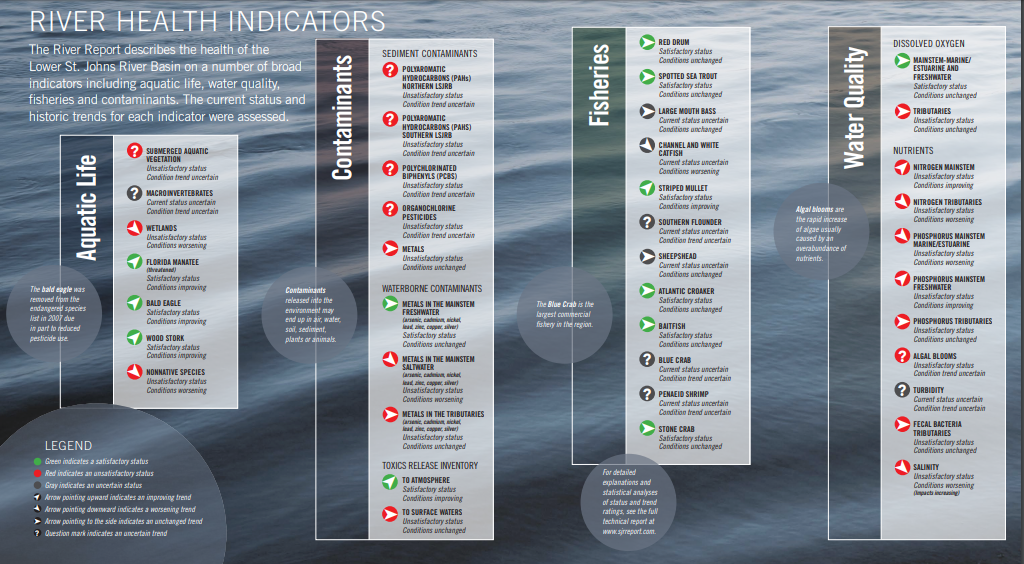The 12th annual State of the River Report for the Lower St. Johns River Basin was recently released by a team of academic researchers from Jacksonville University, University of North Florida, Florida Southern College and West Chester University. This annual report provides a summary and analysis of the health of the Lower St. Johns River Basin (LSJRB), addressing four main areas of river health: water quality; fisheries; aquatic life; and contaminants.
The 2019 Report indicates a striking jump in phosphorus, elevated levels of metals, continued loss of wetlands, and increasing impacts from saltwater intrusion and sea level rise. Each of these indicators serve as ecological red flags that require immediate attention.
In addition to an increase in phosphorous levels that are fueling frequent blue-green algae outbreaks, the report also shows that sea level rise from climate change and a legacy of dredging are causing salinity to rise and saltwater to move further upriver. This saltwater intrusion has “potential negative impacts on submerged aquatic vegetation,” undermining the river’s ability to filter out excess pollution and provide habitat for numerous aquatic organisms.
Here are some findings from the 2019 River Report:
- Total Nitrogen and Phosphorus levels remain unsatisfactory, exceeding state water quality standards. An abrupt uptick in Phosphorous occurred in 2018.
- Metals, including Arsenic, Cadmium, Lead, Silver, and Mercury show elevated levels and a unique pattern from 2016-2018, previously a downward trend.
- Sea Level Rise is increasing groundwater levels. This reduces the capacity of the ground to hold and store nutrients and rainfall, resulting in more runoff, leaching and pollution.
- Saltwater Intrusion is damaging wetlands and submerged vegetation that are critical to the river’s health.
- Wetland losses continue, due to increased land development.
- Submerged vegetation destabilized by drought and back-to-back hurricanes has seen limited recovery.
Click here to read the press release from St. Johns Riverkeeper with more information about our concerns and latest stories in the news in Clay Today, Florida Today, First Coast News, and WJXT News4Jax.
This year’s report and website offer several new features. The Report includes a new Guide for the General Public that summarizes important findings and their implications for boating, fishing, and swimming, as well as ways for readers to get involved. The website also includes resources for K-12 teachers to use the Report in their curricula and features educational videos on a wide range of topics, including algae blooms, manatees, and oral histories.
You can access the complete report and information about specific tributaries at www.sjrreport.com.
